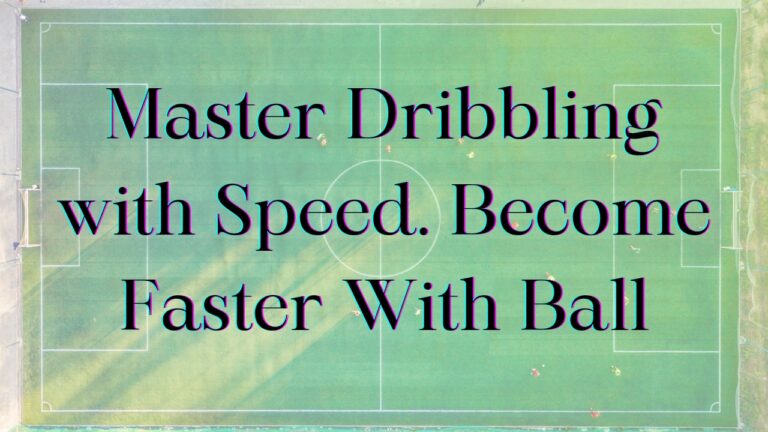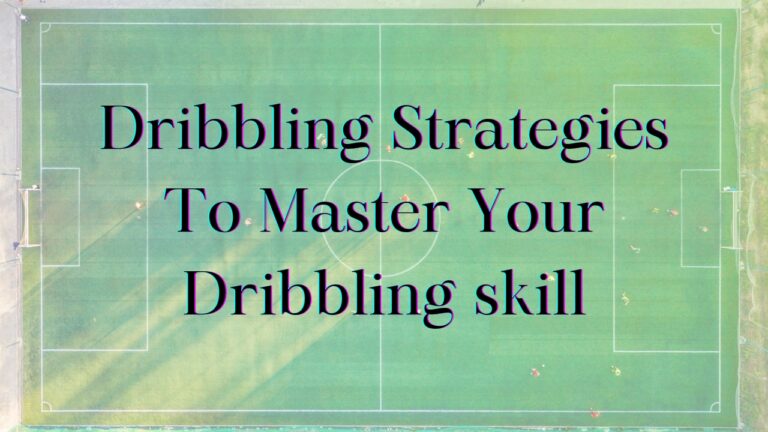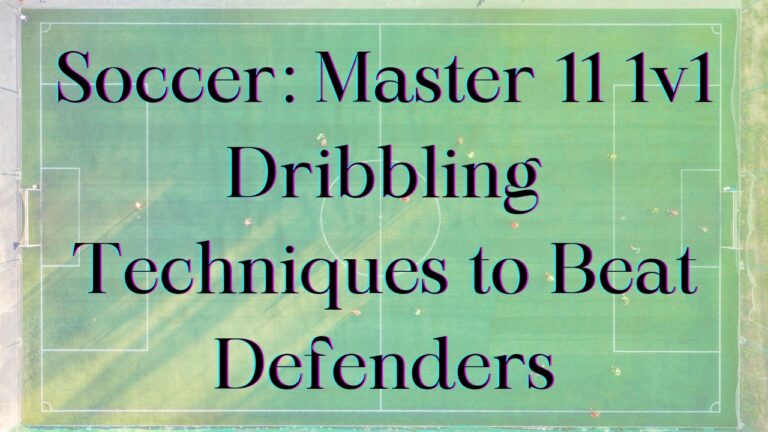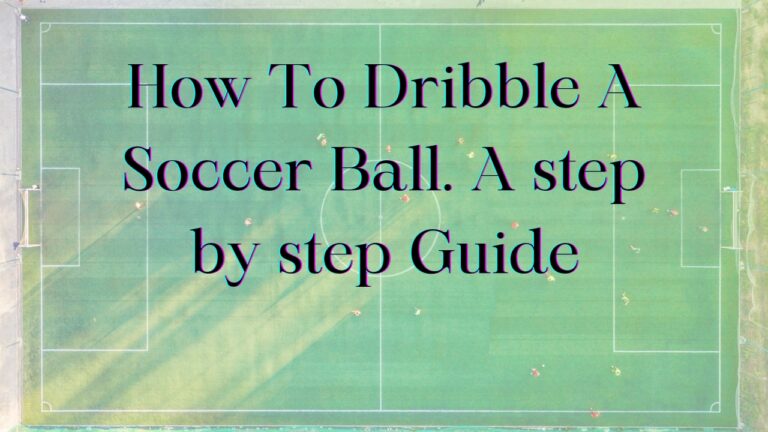For young soccer players, developing excellent dribbling techniques is essential. Mastering the art of dribbling helps youth players maintain possession, beat defenders 1v1, and create more scoring opportunities. Unlocking dribbling mastery should be a priority for any youth coach seeking to develop technically proficient soccer players.
Use Small-Sided Games to Practice Dribbling
One of the most effective ways for youth players to improve their dribbling skills is through small-sided games. 2v2, 3v3, and 4v4 games provide more touches on the ball and space to dribble than full 11v11 matches.
In tight areas with fewer players, young players must improve their close control and learn to maneuver under pressure. Small-sided games also encourage more 1v1 battles, forcing players to beat defenders using their dribbling.
Coaches should set up grids 15×15 yards up to 30×30 yards for small-sided dribbling games. Adjust the size based on the players’ age and ability level. Smaller spaces develop close control, while larger grids allow freedom to dribble at pace.
Vary the rules to emphasize dribbling. Play games where players must execute a certain move or take a certain number of touches before passing. This builds the importance of honing dribbling technique, not just passing the ball.
Through regular small-sided games focused on dribbling, youth players will naturally improve their skills on the ball and in tight spaces.
Read More: 5 Effective Soccer Dribbling Techniques to Improve Ball Control
Emphasize Close Ball Control
Close control refers to a player’s ability to use delicate touches to keep the ball in tight spaces. For youth players, developing close ball control is imperative.
Coaches should encourage young players to utilize the inside and outside of both feet when dribbling. Inside foot, touches are accurate for controlling the ball, while the outside can change direction.
Use cones or poles to set up tight dribbling courses. Seeing how close players can dribble to obstacles without touching them improves control. Dribbling tennis balls or smaller soccer balls at home also helps.
Isolate ball mastery training like toe taps, lofted passes to yourself, and moves like Cruyff turns in tight spaces. Work on feathering the ball with different foot surfaces.
As players improve their close control, challenge them further by adding defenders or limiting touches. Clean, delicate touches in congested areas will become instinctual.
Building this foundation will allow young players to manipulate the ball in game situations and retain possession under pressure.
Pick Your Head Up While Dribbling
Youth players often develop the bad habit of staring at the ball while they dribble. This limits their awareness of the field and options around them.
Coaches must teach young players to pick their heads up frequently while dribbling. Scanning the field provides information to make better dribbling decisions.
Use cue words like “look up!” or “eyes up!” during dribbling activities. Give positive feedback to players who dribble with their heads up.
Incorporate scanning tasks into dribbling drills. Ask players to count teammates, shout out the colors of cones, or call out different types of passes as they dribble. This engrains the habit.
Dribbling with your head up gives you the vision to attack spaces, combine with teammates, and change direction or speed based on defenders’ movements.
Making this effort will speed up players’ processing, reaction time, and assessment abilities when dribbling. Vision and awareness translate directly to better ball control.
Incorporate Moves Like Stepovers and Cruyff Turns
Learning simple feints and turns is an excellent way for young players to add creativity to their dribbling. Moves like stepovers, Cruyff turns, and shoulder fakes teach fundamentals that can be built upon.
The stepover is performed by stepping over the ball repeatedly using the outside or inside of your feet, then accelerating away. This quick footwork deceives defenders.
The Cruyff turn uses the inside of the foot to drag the ball behind your planted leg, then using the outside of your foot to spin away. This changes direction sharply.
Shoulder and body fakes shift your upper body one way before dribbling the other. This causes defenders to lean, and then explode past them the opposite way.
Have players practice these moves slowly at first to get the footwork down. Then add speed and incorporate them into dynamic drills. Doing moves at a game pace will build them.
While advanced skills can wait until later, introducing these core moves gives young players a base to build on. Their dribbling creativity will rapidly improve.
Read More: 7 Advanced Dribbling Drills to Take Your Ball Control to the Next Level
Focus on Changing Speed and Direction
Becoming unpredictable by accelerating, decelerating, and changing direction sharply will make youth players much harder to defend 1v1. This should be a major dribbling focus.
Set up ladder and cone drills that force players to speed up, slow down, and then change direction at angles. Have them practice sprinting out of cuts at full speed.
Vary the pace in small-sided games. Call out commands like “Go slow!” then switch to “Explode!” so players learn to use different speeds.
Using the outside of the foot to change direction, push the ball one way then cut sharply the other. This plants defenders.
Encourage stopping and starting by coming to a complete halt before accelerating out of a stationary position. Defenders will fly by.
Reinforce moves like the stepover and Cruyff turns as ways to change speed and direction together. Linking moves with pace changes is potent.
Practice will sharpen their acceleration, deceleration, and cutting abilities. They’ll learn how to weaponize changes of pace in their dribbling.
Work on Ball Shielding Technique
An essential dribbling skill for youth players to learn is shielding the ball from opponents using their body. Good shielding technique allows them to fend off defenders and protect possession.
Start by having players hold the ball out with their arms and feel resistance from a partner pushing into them. Keep a low body position.
Progress to passive shielding, where the player protects the ball while the defender applies light pressure. Tell them to feel the defender and shift as needed.
Move to active shielding with defenders trying to win the ball and the dribbler asked to pivot and turn away.
Emphasize getting their body in between the ball and the defender. Bend knees to lower center of gravity and use arms for balance.
Solid shielding technique lets players beat defenders 1v1 by protecting the ball, drawing fouls, and maintaining possession under pressure.
Repetition will build good habits so shielding comes naturally to young players when dribbling in tight spaces during games.
Encourage Risk-Taking and Creativity
For youth players to truly master high-level dribbling techniques, they need the freedom to experiment, try new tricks and skills, and be creative. Coaches must encourage risk-taking.
Allow players to express themselves 1v1 during scrimmages. Don’t overcoach every touch – let them try what they’ve learned.
Use positive feedback when they attempt a creative skill, even if unsuccessful. This motivates them to try again without fear.
Challenge young players to add moves and feints when dribbling through drills. Celebrate tricks and flicks.
Let players watch skills videos or professional matches to learn new techniques to imitate. Fostering creativity and joy will fuel their passion.
Risk-taking is how youth players build their repertoire. Allow room to fail so they gain confidence to unlock higher levels of dribbling mastery.
Unlock Dribbling Excellence in Youth Players
Helping young players master dribbling techniques provides lifelong skills and soccer benefits. By implementing the 7 keys outlined, coaches can set their players up for excellence on the ball. Small-sided games, close control, scanning, moves, changes of pace and direction, shielding, and creativity build comprehensive and instinctual dribbling ability. Players will gain the tools to thrive 1v1, beat defenders consistently, and raise their game. Unlock dribbling mastery today!
Read More: Mastering Ball Control in Soccer: The Complete Guide for Beginners
Author





